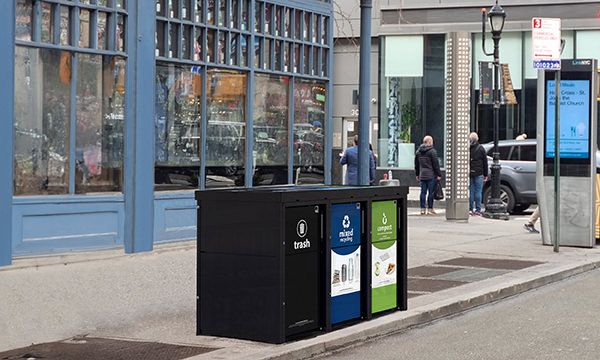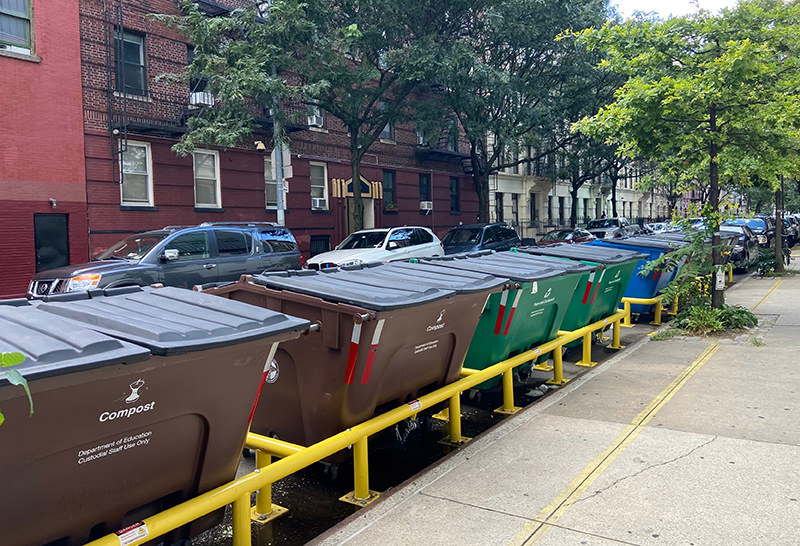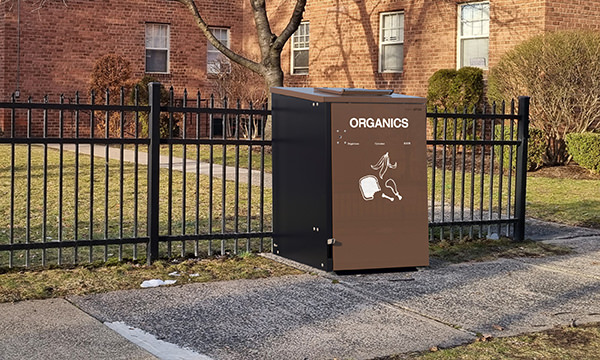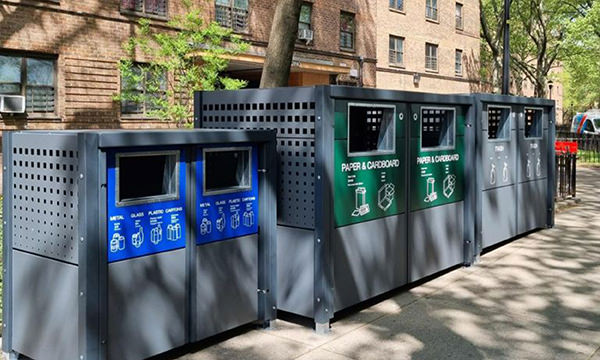Table of contents:
Whether through curbside collection or community drop-off points, 94% of Americans have access to some sort of recycling program. However, the accepted materials, practices and community norms around recycling programs vary considerably across the United States, contributing to differing local recycling levels. The municipal solid waste (MSW) recycling rate in the US has remained around 35% since 2010.
Effective separation of recyclables from trash is an essential aspect of any scheme designed to improve recycling rates among households. Identifying and addressing the challenges faced by households can be facilitated by communication strategies to raise awareness of correct practice, combined with well-designed infrastructure to make recycling separation as easy as possible.
Challenges of Improving Recycling Separation
- A lack of communication and clarity for households over accepted recyclables increases the risk of contamination and potentially leads to the rejection of entire batches of otherwise perfectly acceptable materials, which then ends up in landfills. Wishcycling, an action where households recycle incorrect items in the hopes they will be processed, often comes from a lack of awareness in households.
- Drop off and collection centers can be difficult to access for households without access to a vehicle. These may be located in out-of-town locations or work commitments might clash with opening hours. In addition, the operational efficiency of these can be hard to determine, as well as what materials are accepted at the specific location.
- Insufficient capacity of bins can be a common factor in households with modern waste volumes. If combined with potentially inefficient collection programs, this can cause great difficulties and create a situation where, at a certain point, households don’t engage in effective separation purely due to the impracticality of having recyclables taking up space as they await the next collection.
- Single-stream recycling, where recyclables are disposed and collected in one single container, has its pros and is attractive for households due to the reduced effort involved. However, removing the need to engage in effective at-source separation, can cause issues further down the line, such as a higher probability of wishcycling, a lower quality of mixed materials, and higher costs within sorting and processing facilities that may then lead to low recycling rates.
- The diversity of languages and cultures across communities in the U.S, particularly in high-density cities, means that low capture rates can often be derived from a lack of access to clear and concise visual guidance or mutli-lingual language about how to effectively separate recyclables.
While there are a number of influential factors that hinder separation of recyclables from household trash, when exploring how to improve this it’s important to consider the different types of households across the United States.
And while the majority of Americans have access to some sort of recycling program, people who live in areas where social norms encourage recycling are more likely to be conscious of recycling rules, and how effective separation enables the trash they generate to be recycled rather than landfilled. For single-family households, engaging in effective recycling separation can be much more achievable as they often benefit from more internal space to store materials, as well as access to a curbside collection program with individual bins for trash, materials recycling, and organics.
Ensuring more effective separation of recyclables in communal households, however, presents unique challenges. 31.4% of housing in the U.S. is multifamily, and, while it’s estimated that approximately 30-40% of multifamily units currently have access to recycling, these individuals have limited space to separate their recyclables at-source. The use of communal bin stores are often hindered by neighbors with competing schedules and priorities, as well as varying attitudes towards waste management. Combined with a lack of individual householder accountability, all this makes the need for effective strategies all the more conclusive.
Effective Strategies for More Effective Separation of Recyclables
- Utilizing universally recognized symbols and simple, easy to understand instructions helps to reduce confusion among households over what can and cannot be recycled. Effective separation among all households is entirely possible if individuals are provided with clear, multilingual communication; avoiding ineffective information that detracts from what could be a simple and achievable process, given the right approach.
- 48% of Americans live in an area where recycling is encouraged but not treated as a significant concern. The existence of recycling programs doesn’t necessarily mean everyone with access to them actually engages with them. Implementing legislation to make recycling mandatory for households can help to encourage more effective separation of recyclables and reduce contamination at-source, with potential incentives for households that consistently engage in effective separation.
- Emphasizing the importance of reducing contamination and the environmental benefits of recycling is crucial and can be achieved through comprehensive and engaging educational campaigns. Whether physical, through brochures or leaflets, or virtually through social media, this provides a platform to help inform households about best practices for recycling and separation of materials.
- Introducing multi-waste streams shifts the responsibility to households to engage in effective separation, helping to increase capture rates. While increased frequency of collections would likely be required to accommodate this, the potential for a higher quality of material recovery can help to offset the extra costs involved. This can also be combined with establishing and promoting disposal and collection points for e-waste and hazardous items to encourage the appropriate and safe disposal of these items.
metroSTOR Recycling Infrastructure
Investment in effective infrastructure is a key aspect of changing behaviors towards recycling among households, enabling users to feel confident in their ability to correctly separate their recyclables. metroSTOR delivers physical recycling infrastructure that supports landfill diversion targets and long term visions of zero waste, identifying challenges in recycling separation among households and developing solutions that recognize the complexity in waste management systems.
metroSTOR Dumpster and Cart Recycling Housings are designed to make it as easy for households to recycle correctly as it is to dispose of regular trash. Effective user-interface combines color-coded door panels with clear and easily recognizable recycling symbols, as well as apertures set at a convenient, easily accessible height to facilitate easy disposal in the correct container without users getting their hands dirty.
Research suggests we spend less than 2 seconds at a bin, meaning the window of opportunity to achieve coveted landfill diversion targets is typically limited, and any potential for confusion over what to put in the bin produces mixed results. metroSTOR products embrace these key principles within a clean design that reinforces recycling separation with color-coded graphics that clearly link back to kitchen-caddies and the dumpsters implemented at household convenience centers.








